
Physical therapy (PT), also known as physiotherapy, is one of the allied health professions. It is provided by physical therapists who promote, maintain, or restore health through physical examination, diagnosis, prognosis, patient education, physical intervention, rehabilitation, disease prevention, and health promotion. Physical therapists are known as physiotherapists in many countries.

A respiratory therapist is a specialized healthcare practitioner trained in critical care and cardio-pulmonary medicine in order to work therapeutically with people who have acute critical conditions, cardiac and pulmonary disease. Respiratory therapists graduate from a college or university with a degree in respiratory therapy and have passed a national board certifying examination. The NBRC is the not-for-profit organization responsible for credentialing the seven areas of respiratory therapy in the United States.

The Medical University of South Carolina (MUSC) is a public medical school in Charleston, South Carolina. It opened in 1824 as a small private college aimed at training physicians. It is one of the oldest continually operating schools of medicine in the United States and the oldest in the Deep South. The school's main building was designed by Charleston architect Albert W. Todd.

Midwestern University (MWU) is a private medical and professional school with campuses in Downers Grove, Illinois and Glendale, Arizona. As of the 2020-21 academic year, a total of 2,987 students were enrolled at the Downers Grove campus and 3,902 were enrolled at the Glendale campus.
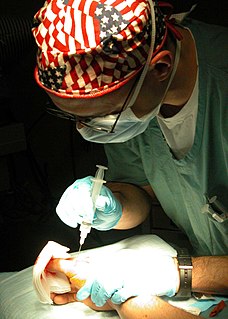
A Certified Registered Nurse Anesthetist (CRNA) is a type of advanced practice nurse who administers anesthesia in the United States. CRNAs account for approximately half of the anesthesia providers in the United States and are the main providers of anesthesia in rural America. Historically, nurse anesthetists have been providing anesthesia care to patients since the American Civil War and the CRNA credential came into existence in 1956. CRNA schools issue a master's or doctorate degree to nurses who have completed a program in anesthesia, which ranges from 2–3 years in length.
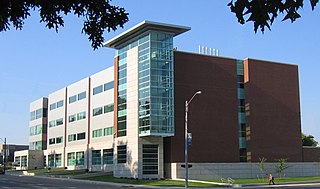
The University of Tennessee Health Science Center (UTHSC) is a public medical school in Memphis, Tennessee. It includes the Colleges of Health Professions, Dentistry, Graduate Health Sciences, Medicine, Nursing, and Pharmacy. Since 1911, the University of Tennessee Health Science Center has educated nearly 57,000 health care professionals. As of 2010, US News and World Report ranked the College of Pharmacy 17th among American pharmacy schools.
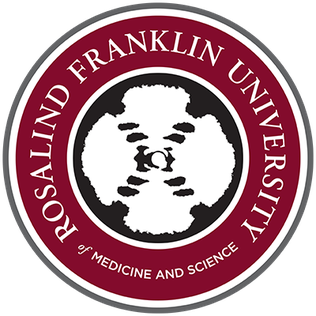
Rosalind Franklin University of Medicine and Science (RFU) is a private graduate school in North Chicago, Illinois. It has more than 2,000 students in five schools: Chicago Medical School, College of Health Professions, College of Pharmacy, Dr. William M. Scholl College of Podiatric Medicine, and School of Graduate and Postdoctoral Studies. The university is named for famous DNA crystallographer Rosalind Franklin. Photo 51, an X-ray diffraction pattern of the B form of DNA, captured by Franklin in 1952, was pivotal in 20th-century history of biology. The image is depicted in the university's seal and logo.
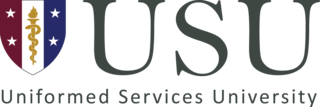
Uniformed Services University of the Health Sciences (USU) is a health science university of the U.S. federal government. The primary mission of the school is to prepare graduates for service to the U.S. at home and abroad in the medical corps as medical professionals, nurses, and physicians.
Athletic training is an allied health care profession recognized by the American Medical Association (AMA) that "encompasses the prevention, examination, diagnosis, treatment, and rehabilitation of emergent, acute, or chronic injuries and medical conditions." There are five areas of athletic training listed in the seventh edition (2015) of the Athletic Training Practice Analysis: injury and illness prevention and wellness promotion; examination, assessment, diagnosis; immediate and emergency care; therapeutic intervention; and healthcare administration and professional responsibility.

The University of North Texas Health Science Center is a public academic health science center in Fort Worth, Texas. It is part of the University of North Texas System and was founded in 1970 as the Texas College of Osteopathic Medicine. UNT Health Science Center now consists of five graduate schools with a total enrollment of 2,329 students (2020–21).

SUNY Downstate Health Sciences University (Downstate) is a public medical school and hospital in Brooklyn, New York. It is the southernmost member of the State University of New York (SUNY) system and the only academic medical center for health education, research, and patient care serving Brooklyn's 2.5 million residents. As of Fall 2018, it had a total student body of 1,846 and approximately 8,000 faculty and staff.
A terminal degree is a university degree that can signify one of two outcomes. In some cases, it is the highest degree that can be awarded in a specific academic or professional track. In other cases, it is a degree that is awarded when a candidate completes a certain amount of coursework but does not go on to doctoral work. Some students enroll in a terminal master's program with the goal of preparing to enter a PhD program. For certain professions and research grants, a terminal degree is a minimum eligibility requirement.

Western University of Health Sciences (WesternU) is a private medical school and health sciences university with its main campus in Pomona, California, with an additional osteopathic medical school in Lebanon, Oregon. With an enrollment of 3,814 students (2020–21), WesternU offers more than twenty academic programs in multiple colleges.
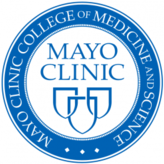
The Mayo Clinic College of Medicine and Science (MCCMS), formerly known as Mayo Clinic College of Medicine (MCCM), is a private graduate-only research university based in Rochester, Minnesota that trains physicians, scientists, and allied health professionals. The college is part of the Mayo Clinic academic medical center and is accredited by the Higher Learning Commission (HLC). MCCMS consists of five schools that offer M.D., Ph.D., and other degrees, as well as medical residencies, fellowships, and continuing medical education (CME).

The Canadian College of Naturopathic Medicine (CCNM) is a private not-for-profit institution with two campus locations, the original in Toronto, Ontario, Canada and the second in New Westminster, British Columbia, Canada.

Physical therapy education varies greatly from country to country. Worldwide, physical therapy training ranges from basic work site education in hospitals and outpatient clinics to professional doctoral degree and masters programs.
Rocky Mountain University of Health Professions (RMUoHP) is a private, for-profit university focused on graduate healthcare education and located in Provo, Utah. It was established in 1998 and is accredited by the Northwest Commission of Colleges and Universities. RMUoHP's student body represents all 50 states and offers both residential and limited-residency programs.
In the United States, certified anesthesiologist assistants (CAAs) are highly trained clinicians that practice medicine under the direction of licensed anesthesiologists to implement anesthesia care plans for a patient undergoing surgery. CAAs are integral members of the anesthesia care team as described by the American Society of Anesthesiologists (ASA). All CAAs possess a baccalaureate degree, and complete an intensive didactic and clinical program at a postgraduate level. CAAs are trained in the delivery and maintenance of all types of anesthesia care as well as advanced patient monitoring techniques. The goal of CAA education is to guide the transformation of student applicants into competent clinicians.

The Mercer University Health Sciences Center opened on July 1, 2012. The Health Sciences Center has campuses in Macon, Atlanta, Savannah and Columbus in the U.S. state of Georgia.

AdventHealth University (AHU) is a Seventh-day Adventist institution specializing in healthcare education that is located in Orlando, Florida; Denver, Colorado; and online. It is associated with AdventHealth, which is operated by the Seventh-day Adventist Church. It is a part of the Seventh-day Adventist education system, the world's second largest Christian school system. The physical facilities are located next to AdventHealth Orlando and Centura Health in Denver. The university offers over 20 undergraduate and graduate degrees from associate to doctorate level, including online and post-baccalaureate certificates.
















